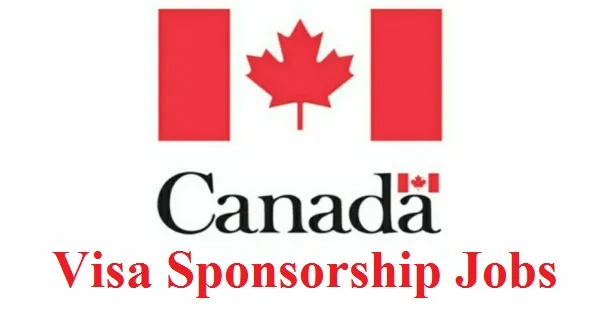Why Canada Is a Top Destination for IT Professionals
Canada’s tech sector is booming. Over 40% of businesses report talent shortages, creating demand for skilled IT workers.
Visa sponsorship programs bridge this gap, inviting global talent to fill roles like software developers, data scientists, and cybersecurity experts.
Key benefits for foreign workers include:
- Permanent residency pathways after gaining Canadian work experience.
- Competitive salaries averaging CAD 80,000–120,000 annually.
- Inclusive work culture and high quality of life.
Types of IT Jobs Offering Visa Sponsorship
Canadian employers prioritize roles requiring specialized skills. Here are the most in-demand positions:
| Job Title | Average Salary (CAD) | Key Skills Needed |
|---|---|---|
| Software Developer | 85,000–130,000 | Python, Java, Agile Methodologies |
| Data Analyst | 75,000–110,000 | SQL, Tableau, Machine Learning |
| Cloud Engineer | 90,000–140,000 | AWS, Azure, DevOps |
| Cybersecurity Specialist | 95,000–150,000 | Ethical Hacking, Risk Assessment |
Top Provinces Hiring IT Professionals with Visa Support
- Ontario (Toronto, Waterloo):
- Home to 40% of Canada’s tech companies.
- Offers provincial nominee programs (PNPs) like Ontario Immigrant Nominee Program (OINP).
- British Columbia (Vancouver):
- Fast-track options via BC Tech Pilot.
- High demand for AI and gaming developers.
- Quebec (Montreal):
- Thriving AI and fintech hubs.
- Requires French proficiency for some roles.
How Employers Sponsor Visas for IT Talent
Canadian companies use two primary pathways:
- Temporary Foreign Worker Program (TFWP):
- Requires a Labour Market Impact Assessment (LMIA) to prove no Canadian candidate is available.
- Fast-track processing for tech roles under the Global Talent Stream (14-day approval).
- Express Entry System:
- Employers sponsor candidates through Federal Skilled Worker Program (FSWP).
- Candidates earn points for age, education, and work experience.
3 Key Steps to Start Your Visa Sponsorship Journey
- Assess Eligibility:
- Verify if your job is listed in Canada’s NOC TEER categories (e.g., TEER 1 for IT managers).
- Build a Canadian-Style Resume:
- Highlight certifications (e.g., AWS, CISSP) and quantify achievements (e.g., “Reduced system downtime by 30%”).
- Target the Right Employers:
- Focus on companies like Shopify, RBC, and Telus, which actively sponsor visas.
Common Challenges and How to Overcome Them
- Challenge: Lengthy visa processing times.
Solution: Apply through the Global Talent Stream for priority handling. - Challenge: Scams offering “guaranteed” visas.
Solution: Verify employers on Canada’s official Job Bank.
CTA: Ready to take the next step? Move to Session 2 for a detailed guide on work visas, eligibility, and avoiding scams.
Key Takeaways from Session 1:
- Canada’s tech sector offers high salaries and visa pathways for IT professionals.
- Ontario, BC, and Quebec are top provinces for sponsored jobs.
- Employers use TFWP and Express Entry to hire global talent.
Work Visa Sponsorship Rules and Eligibility Criteria in 2025
Canada offers multiple visa pathways for IT professionals. Eligibility depends on job type, skills, and employer requirements.
Key visa categories include:
- Global Talent Stream (GTS): For high-demand tech roles (processing in 10–14 days).
- CUSMA (ex-NAFTA): For U.S. and Mexican IT professionals (no LMIA required).
- Provincial Nominee Programs (PNPs): Province-specific streams like BC Tech Pilot.
| Visa Type | Processing Time | Eligibility Requirements |
|---|---|---|
| Global Talent Stream | 10–14 days | Job offer in tech, LMIA-exempt |
| CUSMA | 2–4 weeks | Citizenship (U.S./Mexico), IT job offer |
| Express Entry | 6–8 months | CRS score ≥ 470, valid job offer |
Eligibility Checklist:
✔ Valid job offer from a Canadian employer.
✔ LMIA exemption (if applicable).
✔ Proof of language proficiency (IELTS/CELPIP).
✔ Educational credential assessment (ECA).
How to Avoid Visa Sponsorship Job Scams
Fraudulent job offers targeting immigrants are rising. Follow these steps to stay safe:
- Verify Employers: Cross-check companies on Canada’s Job Bank.
- Avoid Upfront Fees: Legitimate employers never ask for payment to sponsor visas.
- Check Email Domains: Scammers often use @gmail.com instead of company domains.
Red Flags of Scams:
- Promises of “guaranteed” visas without interviews.
- Vague job descriptions or overly high salaries.
- Requests for sensitive data (e.g., passport copies) early in the process.
Transferring or Changing Visa Sponsorship Jobs
Switching employers while on a work permit is possible but requires compliance.
Steps to Transfer Sponsorship:
- Secure a New Job Offer: Ensure the role meets visa eligibility criteria.
- Notify IRCC: Submit a new work permit application with updated documents.
- Maintain Status: Avoid gaps between jobs to prevent legal issues.
Note: LMIA-exempt workers (e.g., GTS hires) can switch jobs faster than LMIA-dependent permit holders.
Work Permit Sponsorship Process: A 5-Step Guide
- Job Offer Received: Employer extends a formal offer and agrees to sponsor.
- LMIA Application (if required): Employer proves no Canadian can fill the role.
- Work Permit Application: Submit forms, fees, and biometrics to IRCC.
- Approval: Receive a Port of Entry (POE) letter for visa stamping.
- Relocation: Enter Canada and start working.
Average Timeline: 3–6 months (varies by visa stream).
Apply for This Job
Please read the job description carefully while you wait for the apply button to be enabled.
